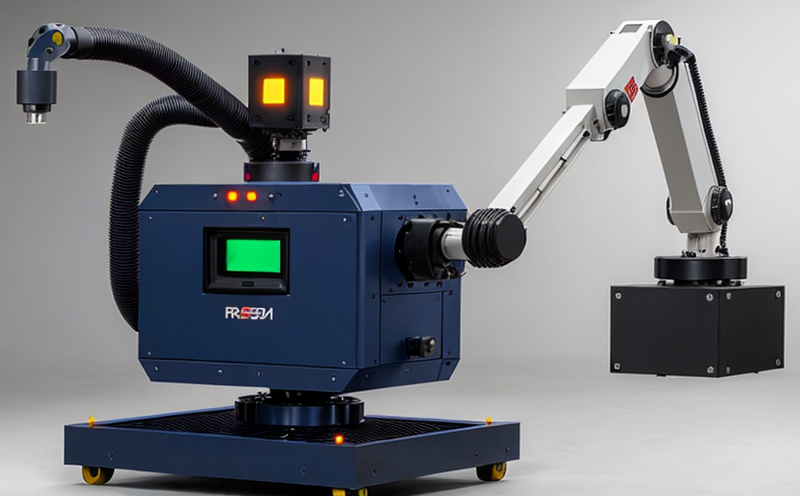Validating multi-axis response time for robotic systems
Validating Multi-Axis Response Time for Robotic Systems Unlocking Efficiency and Accuracy
In todays fast-paced manufacturing landscape, robotic systems are increasingly being used to optimize production processes, improve product quality, and reduce labor costs. However, as the complexity of these systems grows, so does the need for rigorous testing and validation to ensure they operate at peak performance levels. One critical aspect of this validation process is the measurement of multi-axis response time a vital parameter that can make or break the efficiency and accuracy of your robotic system.
At Eurolab, our team of expert engineers has developed a laboratory service designed specifically to validate multi-axis response time for robotic systems. In this article, we will delve into the importance of this process, highlight its numerous benefits, and provide answers to frequently asked questions about the service. Whether youre an industry leader or a small business owner, understanding the value of validating multi-axis response time can help you make informed decisions and drive your organization forward.
Why is Validating Multi-Axis Response Time Essential?
In a robotic system, multiple axes work together in synchronization to achieve precise movements and actions. However, even minor variations in response times across these axes can lead to decreased accuracy, increased downtime, and compromised product quality. This is where Eurolabs laboratory service comes into play.
Validating multi-axis response time involves measuring the time it takes for each axis to respond to a given command or movement. By ensuring that all axes operate within predetermined limits, you can
Ensure precise movements Accurate positioning and movement of robotic arms, joints, or other components are critical in many applications.
Reduce downtime Inefficient response times can cause equipment malfunctions, reducing production capacity and increasing maintenance costs.
Improve product quality By validating multi-axis response time, you can minimize errors and deviations that may impact the final product.
Key Benefits of Validating Multi-Axis Response Time
Here are some of the most significant advantages of using Eurolabs laboratory service
Improved Efficiency Validated multi-axis response times enable your robotic system to operate at peak performance levels, reducing production time and increasing overall efficiency.
Enhanced Accuracy By ensuring precise movements and actions, you can minimize errors and improve product quality, meeting customer expectations and regulatory requirements.
Increased Reliability Regular validation of multi-axis response time helps identify potential issues before they cause equipment failure or downtime, reducing maintenance costs and improving overall system reliability.
Compliance with Industry Standards Eurolabs laboratory service ensures that your robotic system meets the latest industry standards for performance, accuracy, and reliability.
How Does the Laboratory Service Work?
Our team of expert engineers will work closely with you to understand your specific requirements and develop a customized validation plan. The process typically involves
System Setup Our technicians will set up your robotic system in our laboratory, ensuring that all axes are properly connected and configured.
Measurement Protocol Development We will design a measurement protocol tailored to your systems specific needs, taking into account factors such as movement speed, acceleration, and deceleration.
Data Collection and Analysis Our engineers will collect and analyze data on multi-axis response times using state-of-the-art equipment and software tools.
Report Generation We will provide a comprehensive report detailing the results of the validation process, including any areas for improvement.
Frequently Asked Questions
Here are some common questions about Eurolabs laboratory service
Q What types of robotic systems can be validated?
A Our laboratory service is suitable for various types of robotic systems, including industrial robots, collaborative robots (cobots), and humanoid robots.
Q How long does the validation process typically take?
A The duration of the process depends on the complexity of your system and the scope of work. On average, our team requires 2-4 weeks to complete a validation project.
Q Do you provide any additional services or support?
A Yes! Our team offers comprehensive support, including consulting, training, and maintenance, to ensure that your robotic system operates at optimal levels.
Conclusion
Validating multi-axis response time is a critical aspect of ensuring the efficiency, accuracy, and reliability of your robotic systems. At Eurolab, our laboratory service provides you with the expertise and resources needed to validate this essential parameter. By choosing our team for this process, you can
Improve system performance
Enhance product quality
Reduce downtime and maintenance costs
Meet industry standards
Dont compromise on the accuracy and reliability of your robotic systems. Contact us today to learn more about Eurolabs laboratory service and take the first step towards unlocking peak performance levels for your organization.




